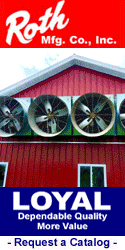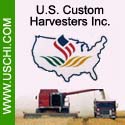 |
 |

|
|
|
Minnesota Ag News Headlines |
 |
Scouting Top Pest Management in Minnesota Spring Wheat
Minnesota Ag Connection - 05/17/2018
The 2017 Agricultural Chemical Use Survey of spring wheat producers collected data about fertilizer and pesticide use as well as pest management practices in growing spring wheat.
Fertilizer refers to a soil-enriching input that contains one or more plant nutrients, primarily nitrogen (N), phosphate (P2O5), and potash (K2O). Of the three primary macronutrients, nitrogen was the most widely used on spring wheat planted in Minnesota
according to the latest USDA, National Agricultural Statistics Service -- Agricultural Chemical Use report. Farmers applied nitrogen to 98 percent of planted acres at an average rate of 118 pounds per acre per year. Macronutrients phosphate and potash were
applied to 96 and 59 percent of acres, respectively. The secondary macronutrient, sulfur, was applied to 31 percent of acres planted to spring wheat.
The pesticide active ingredients used on spring wheat are classified in this report as herbicides (targeting weeds), insecticides (targeting insects), fungicides (targeting fungal disease) and other chemicals (targeting all other pests and other materials, including
extraneous crop foliage). Herbicide active ingredients were applied to 96 percent of the spring wheat acres planted. Tebuconazole was the most widely used pesticide overall, with 67 percent of spring wheat acres treated with the fungicide. Fungicide and
insecticide active ingredients were applied to 86 percent and 37 percent of spring wheat acres planted, respectively.
Scouting for weeds was the top pest management practice for the spring wheat acreage in Minnesota.
Other Minnesota Headlines
|
|
 |


|
 |
|
Copyright © 2024 - Farms.com. All Rights Reserved. |
 |
|